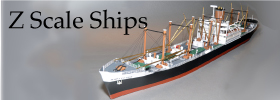- Posts: 764
- Thank you received: 73
German Woods.
- Kelley
- Offline
- Dispatcher
-

Less
More
15 years 9 months ago - 15 years 9 months ago #2631
by Kelley
German Woods. was created by Kelley
My German layout has kind of been pushed on the back burner (I might just build a Module instead)but when I do here is a little tip... If I say something wrong, then of course my German friends here should step in to correct me.
For those using Loren's great trees, or any fur or pine trees you have, you can make woods in nice tidy rows like a corn field. You ca make them in kind of patches with dirt roads in between the patches..like a quilt pattern almost. and make some patches different sizes. You can also make patches where the trees are being cut down.
Different epochs use different methods of getting the trees out. A couple of different manufacturers make the big draft horse pulling the log, and that is still used today is some places. A Lanz Bulldog tractor from the 1920's to even the 50s, and other tractors from 50s to now.
Those little wagons with the rounded roofs..something that reminds you of a gypsy wagon, would be just right to place there in the woods. They are used by the wood cutters. A typical vehicle found out there would be a Mercedes Unimog.
Don't forget the hunters stands, also made by several people.If you can find the Merten Z scale elks, they would look nice in woods too.
A narrow concrete paved road is also not unusual, going through the woods with the smaller roads branching out from them. Remember they are really STRAIGHT.
A few logs all the same size at the side of the roads in nice neat piles should finish things off.
Logging is still shipped out on the German railway at least in my part of Germany. I will try to take some pics.
For those using Loren's great trees, or any fur or pine trees you have, you can make woods in nice tidy rows like a corn field. You ca make them in kind of patches with dirt roads in between the patches..like a quilt pattern almost. and make some patches different sizes. You can also make patches where the trees are being cut down.
Different epochs use different methods of getting the trees out. A couple of different manufacturers make the big draft horse pulling the log, and that is still used today is some places. A Lanz Bulldog tractor from the 1920's to even the 50s, and other tractors from 50s to now.
Those little wagons with the rounded roofs..something that reminds you of a gypsy wagon, would be just right to place there in the woods. They are used by the wood cutters. A typical vehicle found out there would be a Mercedes Unimog.
Don't forget the hunters stands, also made by several people.If you can find the Merten Z scale elks, they would look nice in woods too.
A narrow concrete paved road is also not unusual, going through the woods with the smaller roads branching out from them. Remember they are really STRAIGHT.
A few logs all the same size at the side of the roads in nice neat piles should finish things off.
Logging is still shipped out on the German railway at least in my part of Germany. I will try to take some pics.
Please Log in or Create an account to join the conversation.
- Radialman
- Offline
- Junior Member
-

Less
More
- Posts: 106
- Thank you received: 1
15 years 9 months ago #2632
by Radialman
Replied by Radialman on topic Re:German Woods.
So Kelley, the logging roads are really straight in Germany? Here in Oregon, where timber harvesting is a major industry, logging roads are anything but straight. They tend to follow the curves of the topography. The topography varies wildly as much of the timber is in the hills (everything flat has been cut down for farmland) it rains a lot here and so there are many streams and rivers. Bridges are expensive, so the roads tend to follow the waterways.
And concrete roads? I wouldn't have thought of that. Most logging roads in Oregon are covered in gravel. Especially in older days - the 80's and past - the "gravel" could include rocks that were 1-2 inches across. Very hard to drive in a passenger car, but no problem for the tractor trailers I guess.
Thanks for the info. That's a good point about different eras using different methods.
Cheers,
Jeremy
And concrete roads? I wouldn't have thought of that. Most logging roads in Oregon are covered in gravel. Especially in older days - the 80's and past - the "gravel" could include rocks that were 1-2 inches across. Very hard to drive in a passenger car, but no problem for the tractor trailers I guess.
Thanks for the info. That's a good point about different eras using different methods.
Cheers,
Jeremy
Please Log in or Create an account to join the conversation.
- Kelley
- Offline
- Dispatcher
-

Less
More
- Posts: 764
- Thank you received: 73
15 years 9 months ago #2633
by Kelley
Replied by Kelley on topic Re:German Woods.
Yep..strait rows of trees...the old woods in the US planted by the CCC and WPA...I guess they were in rows too..
Here in central Germany its kind of hilly in places and some roads can be winding and crooked. But other roads in the woods are strait as an arrow. I'm not talking mountains like in Oregon or Washington, you have those further south of where I am.
Yep again concrete. You have to understand that people have been farming here hundreds of years. You will go out in the middle of nowhere and find not only concrete roads but you will find sewers and manholes!!
We used to have maneuvers out in the these woods and were surprised by how strait things were. As far as drainage, well there were these DEEP ditches along the sides of the roads, not pretty to get stuck in.
They have new machines that take out the trees..This thing grabs a tree with a long arm, an automatic saw cuts it, and the the tree gets stripped and loaded. All pretty much with same machine.
Some people are using horses these days because it leaves less of an impact on the woods. They also want to keep the tradition going.
Of course there are mixed woods and trees growing where nature put them. Funny that in cities roads are so crooked over here.
Here in central Germany its kind of hilly in places and some roads can be winding and crooked. But other roads in the woods are strait as an arrow. I'm not talking mountains like in Oregon or Washington, you have those further south of where I am.
Yep again concrete. You have to understand that people have been farming here hundreds of years. You will go out in the middle of nowhere and find not only concrete roads but you will find sewers and manholes!!
We used to have maneuvers out in the these woods and were surprised by how strait things were. As far as drainage, well there were these DEEP ditches along the sides of the roads, not pretty to get stuck in.
They have new machines that take out the trees..This thing grabs a tree with a long arm, an automatic saw cuts it, and the the tree gets stripped and loaded. All pretty much with same machine.
Some people are using horses these days because it leaves less of an impact on the woods. They also want to keep the tradition going.
Of course there are mixed woods and trees growing where nature put them. Funny that in cities roads are so crooked over here.
Please Log in or Create an account to join the conversation.
- ausman2001
- Offline
- Senior Member
-

Less
More
- Posts: 278
- Thank you received: 1
15 years 9 months ago - 15 years 9 months ago #2642
by ausman2001
Replied by ausman2001 on topic Re:German Woods.
The DB still moves a lot of pine logs in northeastern Bavaria and parts of Saxony.
Please Log in or Create an account to join the conversation.
- Radialman
- Offline
- Junior Member
-

Less
More
- Posts: 106
- Thank you received: 1
15 years 9 months ago #2645
by Radialman
Replied by Radialman on topic Re:German Woods.
A lot of wood products are moved by rail here - plywood, wood chips (for paper), logs. Most of what moves on our local rail is wood products.
There are some groves of cottonwoods not far from my house. They are really erie to look at. The trees are all in nice straight rows and all the same tree. They are also built in the flatlands. Cottonwoods are used for paper production. I guess up in areas where they have clear cut, the trees are replanted more or less in rows. Generally they get volunteers to replant the trees and we're a little less concerned about straight rows.
I've heard about the machines. Just heard the guys from "Axemen" (the family is from Vernonia, about 29 miles from us) on the radio talking about those machines. They say there is still a lot of terrain that is just to steep and rugged to use the all-in-one machines.
Cheers,
Jeremy
There are some groves of cottonwoods not far from my house. They are really erie to look at. The trees are all in nice straight rows and all the same tree. They are also built in the flatlands. Cottonwoods are used for paper production. I guess up in areas where they have clear cut, the trees are replanted more or less in rows. Generally they get volunteers to replant the trees and we're a little less concerned about straight rows.
I've heard about the machines. Just heard the guys from "Axemen" (the family is from Vernonia, about 29 miles from us) on the radio talking about those machines. They say there is still a lot of terrain that is just to steep and rugged to use the all-in-one machines.
Cheers,
Jeremy
Please Log in or Create an account to join the conversation.
- ULie
- Offline
- Banned
-

Less
More
- Posts: 333
- Thank you received: 0
15 years 9 months ago #2647
by ULie
GreetingZ, HilZen,
Uwe
Replied by ULie on topic Re:German Woods.
Hello Kelley,
Kelley wrote:
That's just history, those towns are mostly grown from small hamlets and villages into bigger towns and finally citys. The streets had to follow the fields that have been there before, and those had different sizes according to the history (how much sons to inherit and such) of the family who farmed there. There are no citys that were planned on some sketch board before hand.
Forest for logging is different. Since this is and industry easy accessibility was the main concern. As you wrote there are not so much mountains in Germany, mostly it's only hills and a lot of it is really flat. Also as you wrote, since people used the land since ages, and also did use the forrest for logging the forrest changed from wilderness to those neat rows of trees. Only lately after the strong storms we had a few years back it is said to let the forrest grow more wild, to prevent the damage by the wind, which was hardest in those neat rows of trees.
And then in the Lüneburg Heath in August 1975 we had the biggest wildfire in Germany ever. This did lead to wider and better roads in the forrests to prevent a desaster like back then in the future.
Kelley wrote:
Of course there are mixed woods and trees growing where nature put them. Funny that in cities roads are so crooked over here.
That's just history, those towns are mostly grown from small hamlets and villages into bigger towns and finally citys. The streets had to follow the fields that have been there before, and those had different sizes according to the history (how much sons to inherit and such) of the family who farmed there. There are no citys that were planned on some sketch board before hand.
Forest for logging is different. Since this is and industry easy accessibility was the main concern. As you wrote there are not so much mountains in Germany, mostly it's only hills and a lot of it is really flat. Also as you wrote, since people used the land since ages, and also did use the forrest for logging the forrest changed from wilderness to those neat rows of trees. Only lately after the strong storms we had a few years back it is said to let the forrest grow more wild, to prevent the damage by the wind, which was hardest in those neat rows of trees.
And then in the Lüneburg Heath in August 1975 we had the biggest wildfire in Germany ever. This did lead to wider and better roads in the forrests to prevent a desaster like back then in the future.
GreetingZ, HilZen,
Uwe
Please Log in or Create an account to join the conversation.
- Kelley
- Offline
- Dispatcher
-

Less
More
- Posts: 764
- Thank you received: 73
15 years 9 months ago #2658
by Kelley
Replied by Kelley on topic Re:German Woods.
Thanks for the info. Now for our German friends doing US railroads..In US we are kind of opposite. The railroads wee built for the most part first, more or less very strait lines, and the towns and roads came after..also strait. Exception is populated east coast.
I remember those storms in Germany and trees went down like dominos. Very dangerous for the woodcutters as some of the trees were on top of others that were under pressure like a spring...one tree cut and the pressure changed and it shot other trees strait up like a catapult.
I remember those storms in Germany and trees went down like dominos. Very dangerous for the woodcutters as some of the trees were on top of others that were under pressure like a spring...one tree cut and the pressure changed and it shot other trees strait up like a catapult.
Please Log in or Create an account to join the conversation.
Time to create page: 0.221 seconds
















